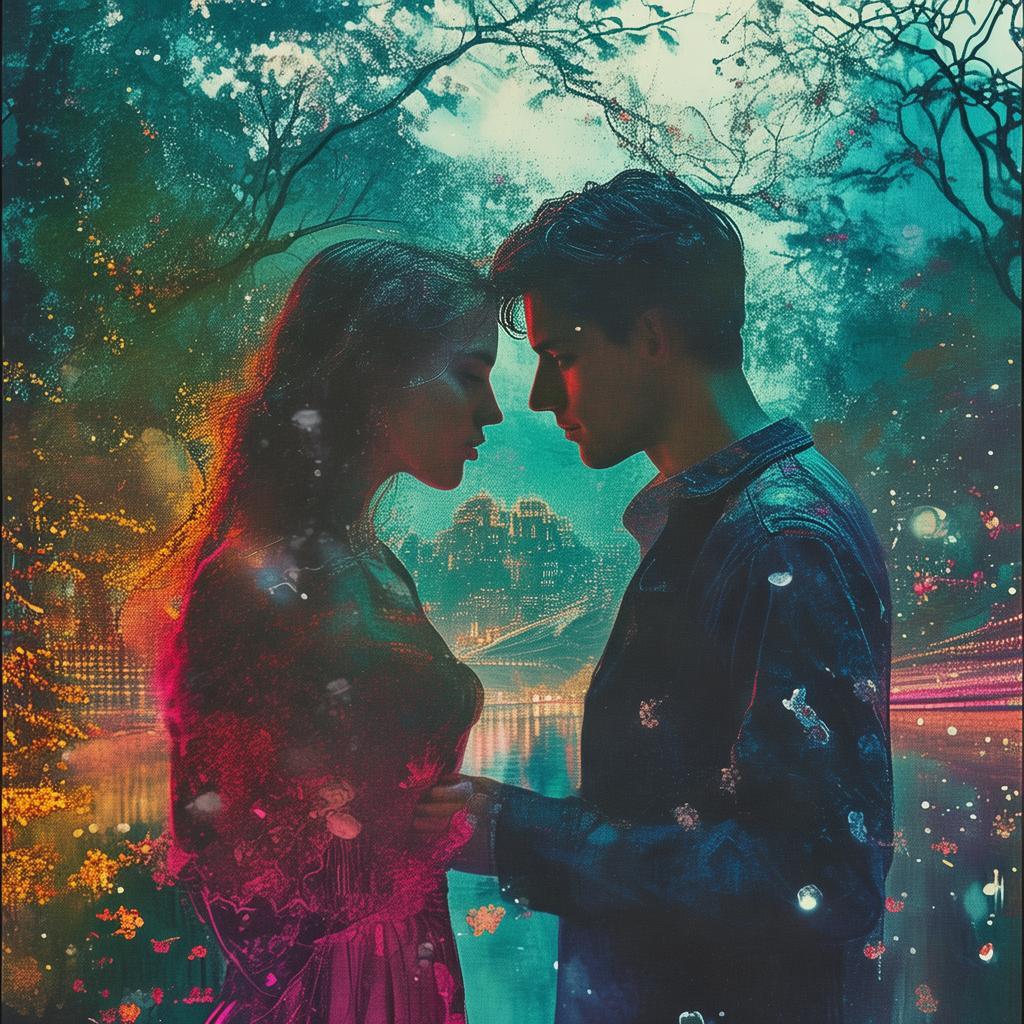The Rosette's Secret
In the heart of the Victorian era, amidst the bustling streets of London, there lived a young woman named Eliza. Her life was a tapestry woven with threads of both love and artistic ambition. She was the daughter of a renowned weaver, and from a young age, she had been fascinated by the intricate designs that her father would weave into his tapestries. Eliza had a gift, too; she could envision stories in the patterns of thread that others saw only as mere designs.
One cold winter's evening, as the wind howled outside, Eliza was working on a new tapestry in the dim light of her father's workshop. The air was thick with the scent of wool and the rhythmic clack of the loom. She had been working on a tapestry depicting a rose garden, but something about the design felt incomplete. She paused, her eyes tracing the patterns, when she noticed an odd, almost invisible mark on one of the roses.

Curiosity piqued, Eliza brushed away the loose fibers and discovered a faint, almost imperceptible symbol. She traced it with her finger, and to her astonishment, the rose began to glow faintly, revealing a hidden compartment within the tapestry. Her heart raced as she carefully pushed the rose aside to reveal a small, ornate box. Inside, she found a delicate locket, adorned with the same symbol she had discovered on the rose.
Eliza's father, a man of few words, watched her intently. "Eliza, what have you found?" he asked, his voice tinged with a mix of curiosity and concern.
She held up the locket, its surface smooth and cool in her hand. "I think it's a key to something... something important," she replied, her eyes wide with excitement.
The next few days were a whirlwind of discovery. Eliza and her father began to research the symbol, which they soon learned was a sign of the Pre-Raphaelite Brotherhood, a group of artists and poets who were passionate about reviving the beauty and intensity of medieval art. The locket, it turned out, was a token of membership, a secret passed down through generations of artists.
Eliza's world began to shift. She learned of a young artist named Thomas, a member of the Brotherhood, who had once been her mother's secret love. The locket had been her mother's, and it held a promise of love that had been long forgotten. As she delved deeper into the story, Eliza realized that her mother's past was intertwined with the very fabric of her life.
Thomas, a man of both passion and mystery, had been a romantic idealist, dedicated to his art and to the pursuit of beauty. He had been a revolutionary, challenging the norms of his time and seeking to reconnect with a more innocent, spiritual world. Eliza found herself drawn to his story, to the idea of love that transcended the ordinary.
As she pieced together the puzzle, Eliza discovered that Thomas had left behind a secret project, a tapestry that was to be his masterpiece, a work that would capture the essence of his love and artistic vision. The tapestry had been unfinished, and it was now Eliza's task to complete it.
The locket, it seemed, was more than a token of membership; it was a key to a hidden world, a world of love and art that had been kept secret for decades. Eliza and her father began to work on the tapestry, each thread of the locket guiding them closer to the truth.
As the days passed, Eliza found herself falling for Thomas, not just as a historical figure, but as a man whose love had been lost to time. She imagined his hands, skilled and passionate, working on the same loom that now held her own. She saw their eyes meeting across time, a connection forged by love and art.
The tapestry, a symbol of their shared passion, became the focal point of their relationship. Eliza's love for Thomas grew as she wove her own story into the tapestry of his. She found herself not just completing his masterpiece, but also creating her own.
However, as the locket and the tapestry began to reveal more secrets, Eliza and her father found themselves facing a moral dilemma. The Pre-Raphaelite Brotherhood had been a group of radicals, and their work had often been seen as scandalous. Completing the tapestry meant delving into the depths of a world that had been shrouded in mystery and controversy.
Eliza's father, a man of principle, warned her of the dangers. "Eliza, this is not just a tapestry; it's a piece of history. You must be careful what you reveal," he said, his voice filled with concern.
Undeterred, Eliza pressed on. She knew that the tapestry held the key to a love that had never been forgotten. As she worked, she felt a connection to Thomas that transcended time. She saw his spirit in her own hands, his passion in the colors she chose, his love in the threads she wove.
The tapestry took on a life of its own, and as Eliza worked, she felt the story of Thomas and her mother unfolding before her. She saw the struggle, the passion, the love that had driven Thomas to create. She saw the same passion in herself, in her father, in the very fabric of the tapestry.
The climax of the story came when Eliza and her father were forced to make a choice. They had to decide whether to reveal the secrets of the tapestry or to keep it hidden, to protect their own lives and the lives of others. In a moment of intense emotion, Eliza chose to reveal the truth, to let the tapestry tell its story.
The tapestry was exhibited, and it became an instant sensation. People flocked to see it, to learn about the love story it contained. Eliza and her father stood by as the tapestry became a symbol of love and art, a testament to the power of passion and the enduring nature of love.
In the end, Eliza found her own love, a love that was both modern and timeless. She found herself not just as a weaver of tapestries, but as a weaver of stories, a keeper of secrets, a carrier of love and art across time. The Rosette's Secret, the story of a tapestry, became the story of Eliza, a woman who had found her place in the world, not just as an artist, but as a lover, a keeper of the past, and a creator of the future.
✨ Original Statement ✨
All articles published on this website (including but not limited to text, images, videos, and other content) are original or authorized for reposting and are protected by relevant laws. Without the explicit written permission of this website, no individual or organization may copy, modify, repost, or use the content for commercial purposes.
If you need to quote or cooperate, please contact this site for authorization. We reserve the right to pursue legal responsibility for any unauthorized use.
Hereby declared.









